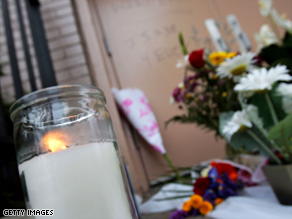
The number of confirmed H1N1 flu cases worldwide is nearing 10,000, the World Health Organization said Tuesday morning.
Commonly known as swine flu, the outbreak has sickened 9,830 people and caused at least 79 deaths — mostly in Mexico, the organization said. The actual number of people affected may be higher, as it takes time for national governments to confirm cases and report them to the global body. In the United States, at least 5,123 cases of swine flu have been reported, according to the latest figures from the Centers for Disease Control and Prevention. The CDC has linked five deaths to the outbreak; health officials in New York have connected a sixth death to the disease. Concern about the disease deepened Tuesday, even as authorities have said that the outbreak may prove to be less severe than first suspected. In New York, medical investigators were looking into the death of a baby boy whose mother brought him to Elmhurst Hospital. The baby died Monday evening, said Dario Centorcelli, a hospital spokesman. The cause of death was not immediately known. That death comes a day after an assistant principal from New York died after contracting the H1N1 virus. That man — Mitchell Wiener — had an underlying health condition, said Dr. Thomas Frieden, New York City’s health commissioner and President Barack Obama’s pick to lead the CDC.
Don’t Miss
Poll: Concerns over H1N1 virus ease
New hope for development of H1N1 vaccine
5 more NYC schools close on flu fears
WHO reports big jump in swine flu cases
Hong Kong hotel guests freed from flu quarantine
Wiener died Sunday evening of complications of the H1N1 virus, hospital and state officials said. If confirmed by the Centers for Disease Control and Prevention, Wiener’s death would be the sixth linked to swine flu in the United States. The CDC has confirmed three in Texas, one in Arizona and one in Washington state. Wiener’s school is among a handful in New York City that temporarily closed at the recommendation of the city’s Health Department. Frieden said Sunday that “with the virus spreading widely,” closing affected schools “will make little difference in transmission throughout New York City, but we hope will help slow transmission within the individual school communities.” The flu strain, which originated in Mexico, killed dozens of people there, causing U.S. officials to worry that it could take a similar toll after spreading across the border. So far, however, it has acted similar to typical seasonal influenza — which usually can be treated successfully but can be deadly among the very old, very young and people with pre-existing health problems.